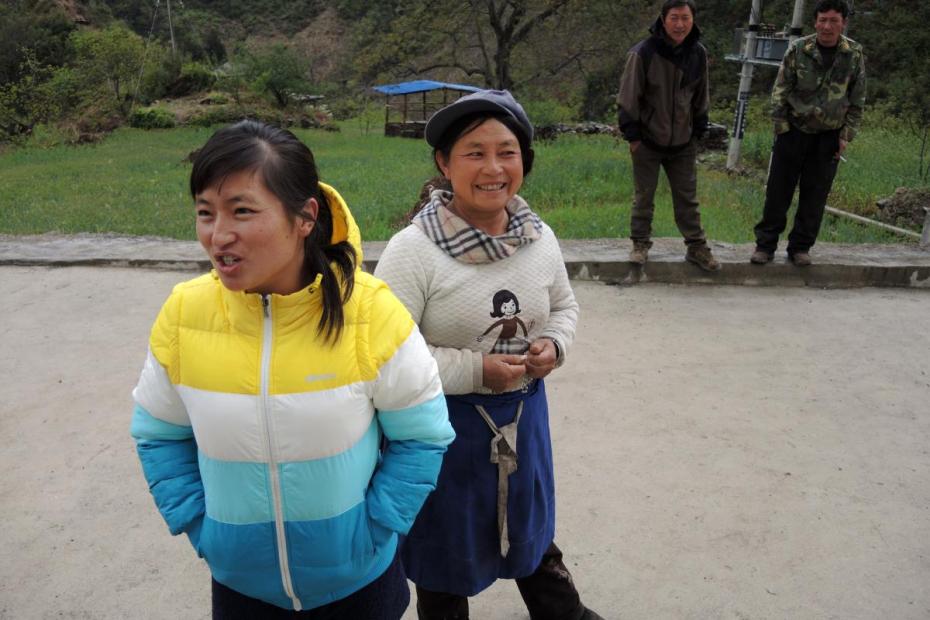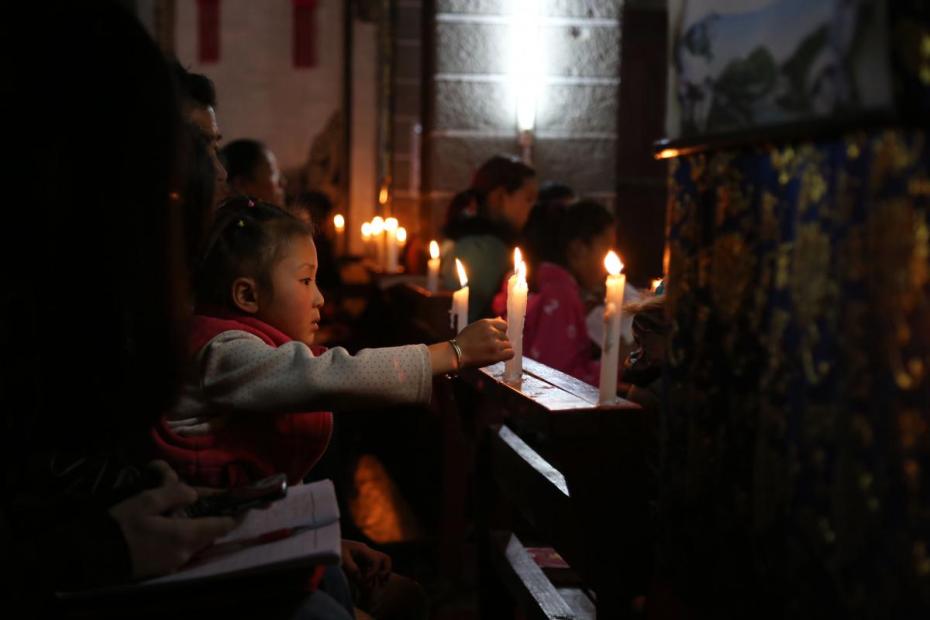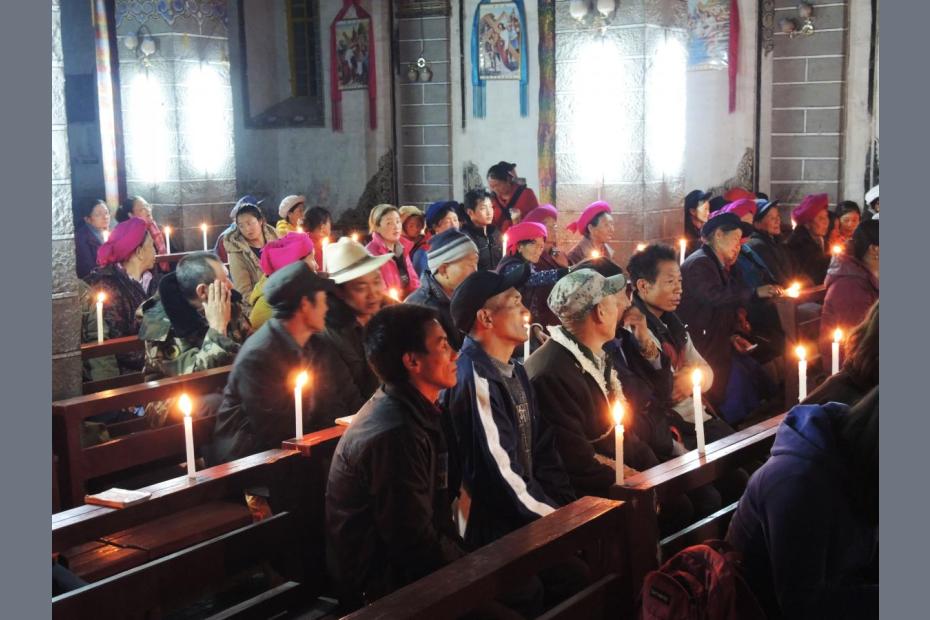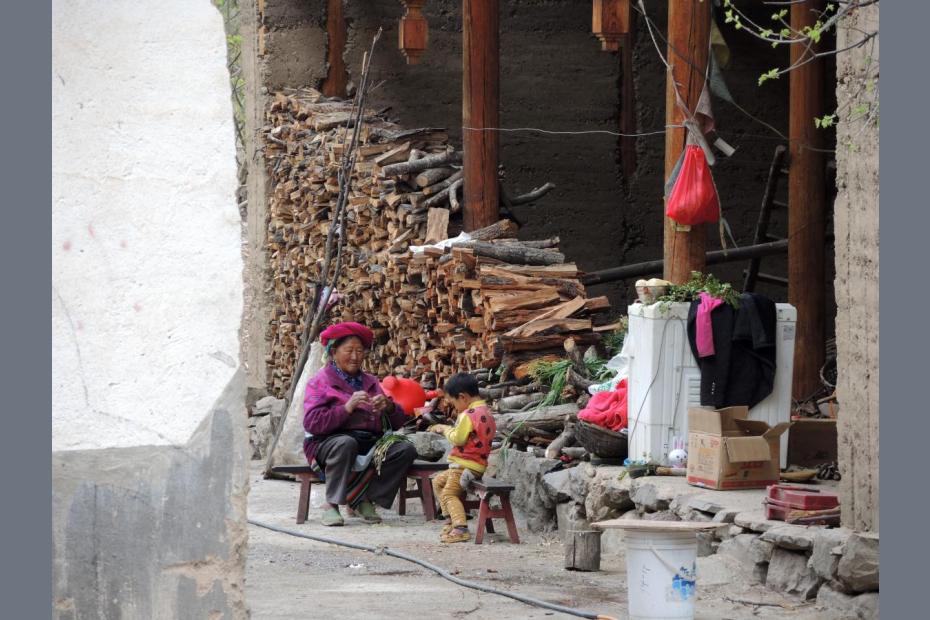The contours of family life in China are shaped by three especially important factors: the traditional and very powerful Confucian and Buddhist tenets of filial piety, the decades-long “one child” state policy, and the shift to an urban, capitalist economy.
According to China’s Confucian and Buddhist legacies, filial piety is the cornerstone of society. Respect for one’s elders is a paramount virtue, without which no other good can be achieved. This requires, among many things, honoring and supporting one’s parents (who traditionally hold a place of honor in a multigenerational household), providing male heirs to continue the family line, and fulfilling a duty to memorialize and honor dead ancestors. Filial piety gives Chinese people a particularly strong sense of duty as a motivation in daily life, but also means that this duty is first and foremost to one’s family and superiors, overriding duty to neighbors and institutions, except in cases where it causes shame on one’s family. Though Chairman Mao worked hard to undermine these values, they remain strong in China, and failure to respect one’s parents, elders or “betters” can draw quick and strong rebuke.
Filial obligations are manifest at Qing Ming, or tomb sweeping rituals each spring, when people are expected to clean the tombs of ancestors to bring food there for the ancestors and often to burn ritual paper representations of money or other goods to send to the next world. In many places, Catholics agree not to participate in Qing Ming in the spring, but similarly visit graves on All Soul’s Day.
One child policy
China’s famous “one child” policy, in effect from 1982 to 2015, has also had an extraordinary influence on family life, and will continue to influence it for a generation or more. Whereas Chairman Mao had initially encouraged parents to have many children in order to build a big and powerful China, by the late 1970s the government began to fear population growth trends. From 2008 onward, the policy was relaxed in a number of circumstances to allow two children per woman.1 In 2015, the government announced that all families could have two children. Still, the national birth rate is declining.
The policy obviously required (and still does require) institutionalizing and compelling abortion, contraception and sterilizations that Church teaching regards as sinful. In a country where sons are more prized than daughters (in rural areas, when daughters marry, they enter the husband’s household, and are not a source of support for parents in old age), the policy has resulted in a disparity in the ratio of marriageable young adult men to women because of selective abortion and abandonment of girl babies. Today, the proportion of marriageable men to marriageable women (120 to 100) leads to the certainty that 30 million men will never be able to find wives. Consumerist pressure means that in cities only men who have achieved greater financial success — e.g. able to bring a car and an apartment to the marriage — come to be seen as worthy spouses.
In rural Hebei, sociologist Richard Madsen reports, families — including Catholic ones — long contravened China’s birth control policies.2 But heavy fines and difficulty registering children for school and national ID cards can make it very difficult to flout these laws even in rural areas, and it is much harder, if not nearly impossible, to do so in urban settings.
After 35 years, the policy means that two pairs of grandparents have one child each, who in turn has only one child. Hence a child usually has no siblings, aunts, uncles, or cousins. How a single child can support and care for two parents and possibly four grandparents is a huge question in a country where the “iron rice bowl” of social benefits promised under communism is for most people a thing of the past. A nation that had more young people than old people will, in future years, have just the opposite.3
Urban, capitalist society
Capitalism, though, is having its own “one child” impact. In urban areas in particular, “one child” has become something of a cultural norm, not just a political requirement, as parents living in small apartments in expensive cities come to regard multiple children as an unaffordable luxury. In contemporary capitalist China, parents now expect to have to “invest” heavily in their children, paying for schools, special programs, universities, and even “red envelope” bribes to secure opportunities for them in the world. They work exceptionally hard and sacrifice to assure the best opportunities possible for their child. Those who once worked for state enterprises but now find themselves responsible for their own welfare in retirement are especially motivated to make sure that their child is a great success, and thus able to support them. Chinese commonly refer to this as a generation of “little emperors,” and as these children have grown up, expectations for providing such advantages for children have risen. Parents would find themselves hard pressed to provide that level of benefits to more than one child, and feel intense competition for their children to be well educated and prosper in a more competitive, capitalist society. Even as these “little princes” are sometimes derided as spoiled, children are placed under great pressure to succeed, and a huge proportion of family resources are often directed to make that success possible, since the state no longer provides the same resources or opportunities for children.
In villages like Cizhong in the Lancang Valley, the one child policy does not apply to most families, because they are members of “minority peoples,” but very few families appeared to have more than one child.
Mobility in search of urban jobs often means that the elderly are left behind in the villages, sometimes with children, while parents labor in urban factory areas. Capitalist competition makes it harder, not easier to take care of parents. In cities, where multigenerational households were once the norm, China has recently seen a boom in something entirely new — retirement homes, places that can be counted on to take care of parents for the children.
On a broader level, the shift to a capitalist economy and urbanization mean that parents and children straddle huge experiential gulfs, wherein one family may still have parents rooted in a rural village, having had limited life experiences or having seen opportunities diminished by political campaigns or by the transition from communist to capitalist society, while the next generation’s children become more urban and more adept at finding their way in this new society.
Implications for Catholic life and practice
How these values are influencing Chinese Catholic families has not been deeply explored, beyond the ways expressed above. One could expect, and one finds, plenty of historical anecdotes and evidence that Chinese Catholicism integrated filial obligation deeply into the local Christian worldview as a matter of Christian teaching too. These are, of course, part of the Ten Commandments, but certainly have not been highlighted to the same degree in many other cultures.
In recent years, vocations to the priesthood and religious life have decreased, a factor often attributed to small families, because of the pressure on a single child to provide heirs and to support parents and grandparents. The one child policy makes it less likely that parents, especially where they may need to rely on children for care in old age, and are hoping for an heir, would encourage that child toward priesthood or religious life.
- 1Among the exceptions are families who are from “minority peoples” or, in some cases, whose first child was a girl, or couples who are both only children.
- 2Richard Madsen, China’s Catholics: Tragedy and Hope in an Emerging Civil Society (Berkeley: University of California, 1998), 102.
- 3For helpful charts on this demographic shift, see Center for Strategic and International Studies, China’s Long March to Retirement Reform: The Graying of the Middle Kingdom Revisited, by Richard Jackson, Neil Howe and Keisuke Nakashima, (Washington, D.C.: 2009) http://csis.org/files/media/csis/pubs/090422_gai_chinareport_en.pdf




